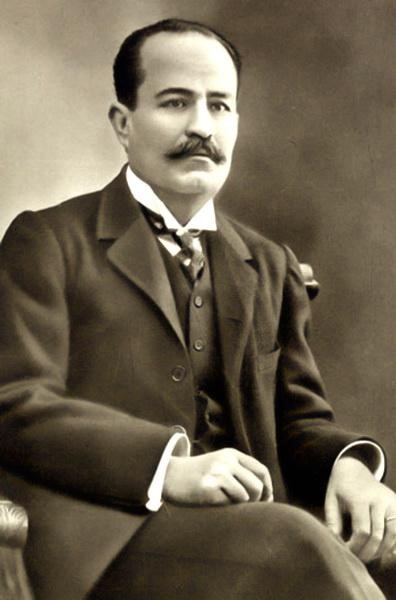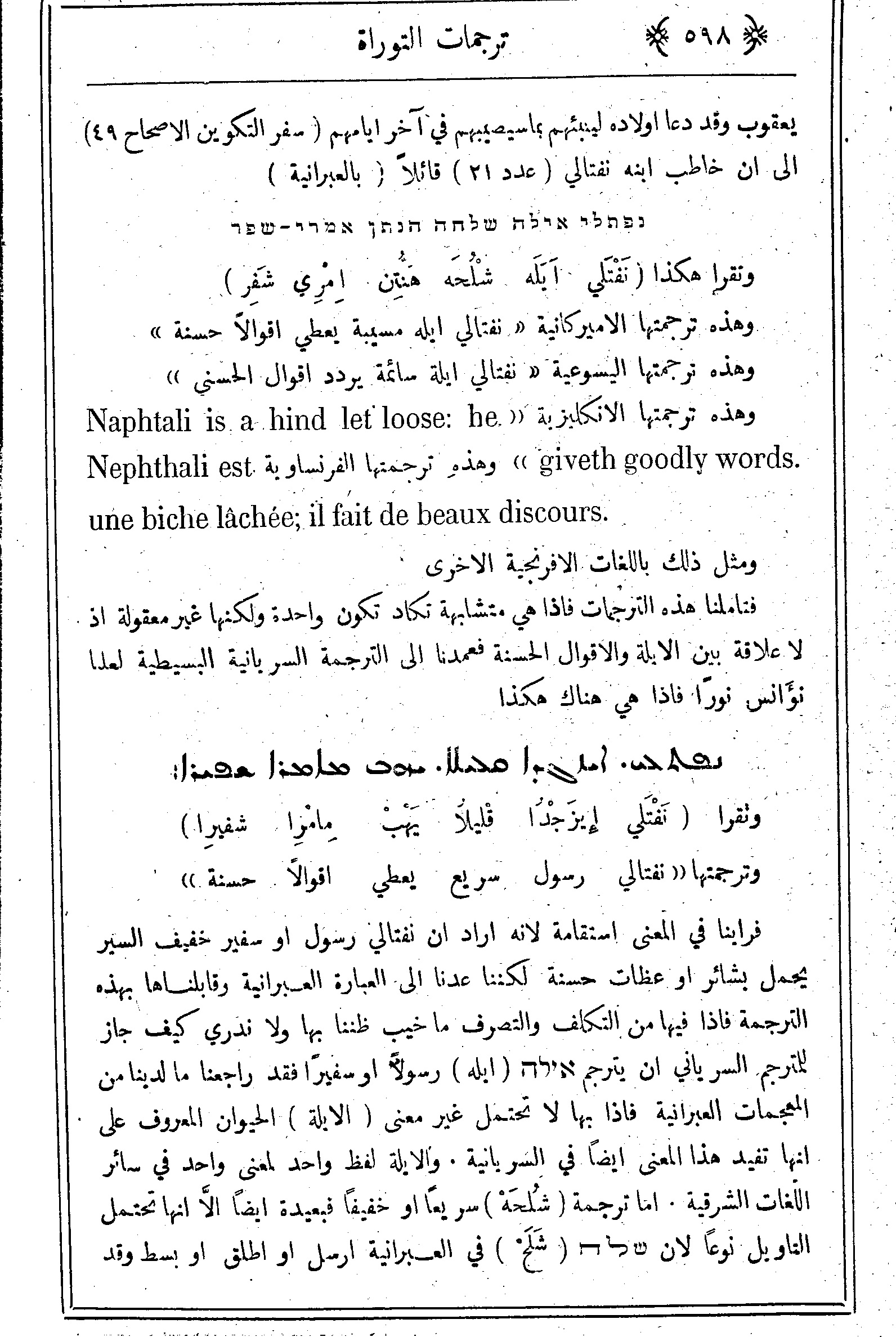by Vevian Zaki
In 1892, Jūrjī Zaydān, a Lebanese historian and novelist, inaugurated from Cairo his magazine al-Hilāl or ‘the Crescent.’[1] This magazine soon reached a high rank among the educated class, attracting elite authors to write for it, and becoming popular among Arabic speakers everywhere. The cover of the first issue of al-Hilāl informs readers that its main interests are science, history, health, and literature; however, its sections branched out widely over the years.[2] Starting from the third issue of the first year, there was always a space for the readers’ questions and enquiries. This space at first bore the title “Correspondence Section,” then “Readers’ Correspondence,” and later “A Question and Suggestion.” Readers could pose any questions in this section that occurred to their minds and the editor of the magazine would find answers to these questions.[3]

When I say “any questions,” this literally means any. See for example the issue of February 1893. The reader Mikhāʾīl Ḥannā from Suez poses a question on the reasons that the tides happen in the sea and not in rivers. Here also sheikh Ahmad al-Alfī from Tuhk al-Qarāmūṣ poses a question on the Earth’s rotation (November 1st, 1894, pp. 186-188). Other questions were posed by Rifʿat Muḥammad Efendi from Sūhāj (January 1st, 1895, pp. 342-350) on the armies in the Umayyad and Abbasid Eras, by Yūsuf Efendi Marco from Fākūs (October 15th, 1896, pp. 137-140) on the lunar months, and by Ahmad Najib (February 1st, 1895, 462-469) on the origins of the Arabic script. Other topics were raised such as mothers-in-law, manufacturing beer, the history of musical instruments, and the history of money.[4] Some questions were one-off discussions opened and closed in a single issue of al-Hilāl. Other questions such as women’s rights and writing in fuṣḥā (standard Arabic) or ʿāmmiyya (colloquial Arabic) turned into longer discussions across several issues through the contributions of other readers, public figures of the time, and extended even to other magazines.[5]
In addition to the social, scientific, and historical enquiries, many readers also raised questions on religious matters. Jewish, Christian, and Muslim readers came to al-Hilāl magazine with their enquiries about their own religions as well as the other’s religion. For example, they asked about the translations of the Talmud (February, 1905, pp. 303-304), al-Ḥajj in Islam (December, 1909, pp. 174-181), and more importantly for our blog—about the Arabic Bible.
Ibrāhīm Jamāl Efendi, a lawyer from Cairo, sent the first question to the magazine (June 1st, 1894, pp. 593-600). His question concerns the translations of the Pentateuch into Arabic. Mainly, he wondered why there are differences between the two famous Arabic translations at the time, the American missionaries’ translation and the Jesuit translation.[6] He asked, moreover, which one of these two translations is closer to the Hebrew original, and whether one of them has been altered. Zaydān, who studied earlier old Eastern languages such as Hebrew and Syriac, answered these questions in detail in almost six pages of this issue. After assuring the reader that there is one Hebrew original, he described the American missionaries’ translation as a literal one which stays closer to the original text, but leaves the understanding of the text’s meaning to the judgement of the reader. At the same time, this literalness might make the translated text ambiguous, and in turn cause confusion to the reader. Zaydān also observed that the translation of the Jesuits is non-literal, eloquent, and its meanings clearer to the reader. However, this becomes problematic, in his opinion, when the translator selects an inaccurate meaning of the original Hebrew text. Zaydān continues his response discussing some examples from both of these translations, along with other ancient and modern translations that he consulted such as the Syriac Peshitta and a French translation. This topic drew the attention of other readers as well as the editors of another magazine, al-Bashīr. From the response in al-Hilāl (July 1st, 1894, pp. 662-665), it may be assumed that al-Bashīr defended the translation strategies of the Jesuit translation. Zaydān again explained what he thought about this particular translation using many examples.

This topic subsided for a while until February of the next year; the reader Bishāy Fām posed another question on a difference in Exodus 20:6 between the translation from Beirut and the one from Rome (p. 426).[7] Al-Hilāl published the question under the title ikhtilāf al-tarjamāt ‘Translation Discrepancies.’ The response this time was short; Zaydān was in favor of the reading in the Beirut translation as it complies with other passages in the Pentateuch and with the Hebrew text as well as other translations such as the Jesuit one, the French, and the German translations. Meanwhile, Rome’s translation follows the Septuagint and the Peshitta. Sheikh Maḥmūd Najm al-Dīn from al-Manṣūra City followed up on this question, asking for the reasons that this reading is altered in the Septuagint (April 15th, 1895, pp. 623-625).
Other readers posed similar questions which al-Hilāl published under the title tarjamāt al-Tawrāt ‘the translations of the Pentateuch.’ See for example Asʿad Efendi Manṣūr from Jaffa asking about a variant reading in the book of Numbers (February 1st, 1896, pp. 419-421). Some questions sprang from old discussions, Khalīl Efendi Fūʾād, for example, sent an enquiry about the Polyglot translation that Zaydān quoted in his answer to the previous question (February 15th, 1896, pp. 461-463). Other questions took new directions such as the geographical question of Nisīm Efendi ibn al-Ḥākhām Ḥāym on the location of the land of Uz mentioned in the book of Job (April 15th, 1902, p. 447).

A few remarks can be made about discussing the Arabic Bible in a public magazine. First, Zaydān usually received criticism for writing about Islamic history, while being a Christian, and for mixing this history with fiction in his novels.[8] However, his responses to questions concerning the Arabic Bible reveal his other skills. He showed awareness of the different printed versions of the Arabic Bible of the time, even those that were not common in the Near East such as the Polyglot Bibles. Moreover, he acquainted himself with their texts to the extent that he could argue for certain advantages and disadvantages of each translation. Even more telling are his quotations of the Bible in other Eastern languages such as the Syriac Peshitta and the Hebrew Bible. While he was giving examples of biblical verses in his responses, he quoted words or whole verses in Hebrew or Syriac using their scripts. Taking the effort to print a few lines in different fonts at the end of the nineteenth century makes one wonder about the importance of publishing the verses in their original script. How many of the potential readers of al-Hilāl were able to read these languages? Was it worth the effort and the cost? Was it meant only to make the response more authoritative?
Second, there is a noticeable openness in posing questions and responding to them: openness in asking about one’s own Scripture, in particular asking someone who is not from the same religion about one’s own Scripture, receiving questions from people of other religions about one’s own Scripture, and to have all this happening in the public sphere.
Third, in addition to the diverse religious backgrounds of the readers, it should be noted that most of them come from small cities. These questions reveal, however, readers that are familiar with having different translations of the Bible into Arabic at hand. This implies that these translations were widely distributed and accessible to Near Eastern Christians. In addition, these readers seem to have the intellectual ability and the critical mind that made them busy collating these translations and struggling with the variant readings among them.
Fourth, these questions manifest the kind of thinking and problems that occupied the Christian mind at the end of the nineteenth century. One wonders whether these questions were discussed in churches. The Near East at that time already had the traditional as well as the reformed Christian denominations. However, these readers preferred to come to a layman with their questions.
Vevian F. Zaki is a Research associate in the ERC-funded project “Stories of Survival: Recovering the Connected Histories of Eastern Christianity in the Early Modern World,” History Faculty-University of Oxford. She currently works on the Eastern Christian visitors of St. Catherine’s Monastery (16th-18th centuries) through the marginalia they have left in the manuscripts. She holds a PhD in the History and Culture of the Near and Middle East from Ludwig-Maximilians-Universität, Munich. As a member of the Biblia Arabica project, she wrote her dissertation on the transmission history of the Pauline Epistles in Arabic. Her interests include Eastern Christianity, manuscript culture, and manuscript acquisition history.
Suggested Citation: Vevian Zaki, “Questions on the Arabic Bible? Jūrjī Zaydān has Answers“, Biblia Arabica Blog, 17 December 2019, DOI: https://doi.org/10.5282/ubm/epub.121816/.
FootnotesI am grateful to Prof. Ronny Vollandt and Dr. Nathan Gibson for their comments and suggestions on this blog. I also appreciate the continuous support of Dr. Rocio Daga.
[1] The autobiography of Zaydān was edited by Ṣalāḥ al-Dīn al-Munjjid, Mudhakkirāt Jurjī Zaydān (The Memories of Jūrjī Zaydān). Beirut: Dār al-Kitāb al-Jadīd, 1968.
[2] On the development of the contents of al-Hilāl, see Thomas Philipp, Ǧurǧi Zaidān: His Life and Thought. Beirut/Wiesbaden: Orient-Institut der Deutschen Morgenlandischen Gesellschaft/Franz Steiner, 1979, 229-234.
[3] I accessed all the issues of al-Hilāl through http://archive.alsharekh.org.
[4] See the issues of July 1st, 1897, pp. 822-825; April 15th, 1894, pp. 500-504; and October 1st, 1894, pp. 101-106 respectively.
[5] See for example the discussions of women’s rights in the issues of 1894.
[6] The American missionary translation is known usually as al-Bustānī-Van Dyck Arabic Bible, 1865; and the complete Jesuit translation of the Bible was published in 1881.
[7] While the translation of “Beirut” is another name for the translation of al-Bustānī-Van Dyck Arabic Bible; the translation of Rome is the Biblia Sacra Arabica version published in Rome, 1671.
[8] He has written more than twenty novels that narrate the Islamic history as a story such as Fatḥ al-Andalus, Istibdād al-Mamālīk, Shajarat al-Durr, etc. See a complete list of his novels in Josef Ḥarb, Jūrjī Zaydān: Rijāl fī Rajul (Jūrjī Zaydān: Many Men in One Person). Beirut: Bayt al-Ḥikmah, 1970.


Leave a Reply